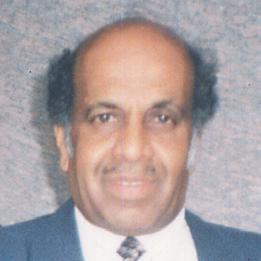
3 minute read
Is gandhism extinct in India?
from 2013-02 Sydney (1)
by Indian Link
BY NOEL g DE SOUZA
Mahatma Gandhi, the Father of the Indian nation, was a complex person, like many other great people. However the thing which stands out was that he was a peaceful man, even to the point of naiveté. There has been no other such person in India’s history since its independence.
There are those who consider Mohandas Karamchand Gandhi (‘mahatma’ is a title meaning ‘great soul’) to be a naïve and impractical person. For example, Gandhiji (a respectful address) believed that passive resistance by Jews against the Nazis could help them to ultimately win their rights. History has clearly proven otherwise.
President Barack Obama openly professes his admiration for Gandhi. He told students at the Wakefield High School in Arlington in 2009 that Gandhi represents the power of change through ethics, and how to use morality to foster change. Obama pointed out to the students that Gandhi made people realise that they had power within themselves and that that power needed to be used to help others, and not to oppress them.
Gandhian methods helped India gain its freedom from the British and the French which were democratic countries, but failed when it came to the Portuguese under the dictatorial rule of Salazar.
During his famous speech, ‘We have a dream’ on Capitol Hill, Martin Luther King and his supporters around him wore white Gandhi caps
Gandhiji hailed from the state of Gujarat. When he moved from Britain to South Africa, he was smartly dressed and sat in a carriage reserved for whites. But though he was fair-skinned, he was thrown out of the carriage because a white person objected to his presence there. This started the Civil Rights movement in South Africa.
After returning to India, for a time Gandhiji lived in Gujarat which was known then for its Hindu-Muslim amity. In recent decades ironically, Gujarat has seen communal riots in the city of Godhra. In 2002, a railway carriage carrying activists returning from Ayodhya was set on fire, reportedly by extremist Muslims (over 30 of them were later convicted); fifty-nine persons were killed including women and children. In retaliation, Hindu activists set fire to Muslim shops and homes, resulting in over a thousand deaths. The current premier of the State has been blamed for the incident, but he denies any involvement.
Migration Agents
We also specialize in Home / Commercial Loans (MFAA Certified) specialist
Contact:
Sonal Agrawal Syed Mohiuddin (JP) Ex-Visa officer


MARN:1169617, MMIA:5385 MARN:1171248, MMIA: 1021, MFAA:54385
Level 2, Suite 8A, 48 Macquarie Street, Parramatta, Australia 2150
PH (02) 86775161, FAX: (02) 98916314
Email: contactus@completemigrationservices.com.au
(We
Gandhiji’s methods of peaceful and nonviolent agitation secured India’s freedom from British rule. His methods worked admirably within the parameters of a democratic society. That is why Gandhian ideas of ‘passive resistance’ (called ‘satyagraha’ or action for truth, that is, for justice) have been successfully used in South Africa, the USA and Zimbabwe.
Gandhian methods helped to secure rights for Afro-Americans in the USA. Gandhi’s methods were emulated by Martin Luther King Jnr in the Civil Rights movement in the USA. During his famous speech, ‘We have a dream’ on Capitol Hill, King and his supporters around him wore white Gandhi caps. People were reminded of that speech during the Atlanta Olympic Games when images of Gandhi were prominently displayed.
Peaceful demonstrators (sathyagris) marching into Goa in 1955 were met by gunfire and mowed down. Several were killed.
In 1961, India ultimately seized control of the Portuguese possessions within India through military means. In 1975, the army overthrew the undemocratic successor to the late Salazar regime and soon after, democracy was re-established in Portugal. The country then signed a treaty recognising Indian sovereignty over its former possessions.
Today, the relationship between Portugal and India is a very friendly one. There are thousands of Indians (both Christians and Hindus) living in Lisbon where significantly, there are two statues of Gandhi in the city. There was one true follower of Gandhi who lived a selfless life. He was Acharya Vinoba Bhave, a freedom fighter who was jailed for agitating against British colonial rule in 1932. He was known in a limited circle because of his writings in his native Marathi. It was Gandhiji himself who introduced him to India in 1940.
Bhave was a spiritually minded person who had deeply studied the major Hindu texts and commented on them, as well as some on Islam and Christianity. He stated that his main purpose was the union of hearts. Bhave dedicated himself to achieving land distribution to the poor by persuading large landowners to donate land, in what became well known as the bhoodan (gift of land) movement.
Gandhiji’s utopia was an India composed of self-sufficient villages. Since then, urbanisation has skyrocketed and what were once small towns are now growing urban centres. To protect rural jobs, the government has allocated certain industries to rural areas. It is essential that jobs having mass employment be protected. Thus a machine invented to mechanise the production of a local cigarette-type item (bidi) was banned, as it would create mass rural unemployment.
In India, Gandhism is still alive in the rural sector. However, growing intolerance and vociferous activism is harming the country’s political fabric.











